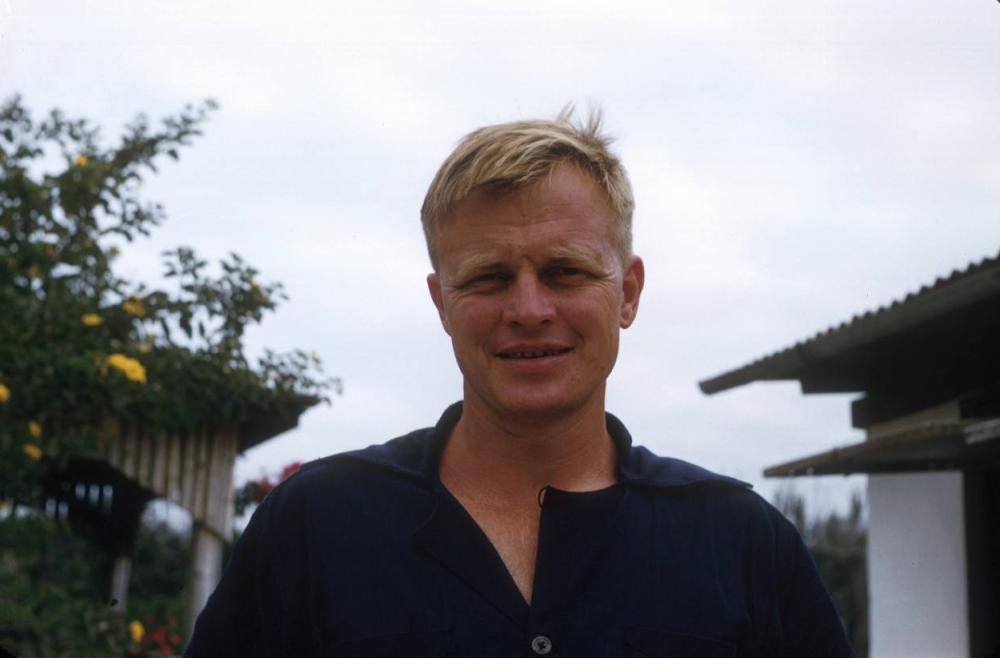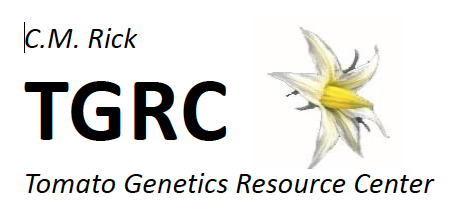
Alf Kastdalen was a Norwegian settler and amateur naturalist in the Galápagos Islands whose family established a farm in Bella Vista, on Santa Cruz Island. Attracted by the mild climate and opportunities for settlers, the Kastdalen family (Alf, his father Thorvald, mother Marie, and aunt Amanda Christofferson) moved to the islands in 1935, when Alf was ten (Lundh, J. P. 1999, 2001). Their location at Bella Vista had several advantages for farming: adequate rainfall (in most years) on the slopes of the volcano, moderate temperatures influenced by the cool waters of the Humboldt current, an extended growing season at the equator, and relatively few insect pests or diseases. As a result, a wide variety of crops could be grown there, and they had great success with potatoes, of which Alf claimed to harvest three crops per year.
Alf's involvement with tomatoes began in 1950 when Charley Rick inquired about obtaining seeds of the native Galápagos tomato, L. cheesmanii (now S. cheesmaniae). At that time, this species was known from botanical descriptions and herbarium specimens, but there were no seeds available for experimental work. Rick was put in contact with Alf in a very round about way, as evident from his first letter:
Dear Mr. Kastdalen,
After trying for a long time to learn of a person who might be interested in collecting plants on the Galápagos Islands, I now have the good fortune of hearing of you from Dr. Carl Sauer of the Department of Geography at U.C. in Berkeley, California, who learned about you from Dr. R.W. Richardson of the Geography Department of the San Diego State College in San Diego, Calif., who was informed about you by Mr. Rolf Blomberg of Quito, Ecuardor, who met you on a visit to the islands."
This began a correspondence and friendship between the two that would last for over 30 years. Alf generously collected and sent Rick seed samples from a plant of S. cheesmaniae, which grew near Puerto Ayora at Academy Bay, Santa Cruz Island. (This accession has been maintained ever since as LA0166.) These were the first seeds of any Galápagos tomato Rick was able to obtain, and they would jump start his research at Davis on this fascinating endemic species, and the many novel traits which he discovered in them. Several years later, Alf sent seed of another Galápagos endemic tomato relative, L. cheesmanii f. minor (now S. galapagense), which had been collected by a Swiss girl, Zouzou Coray, on Bartolomé Island, and was also the first accession (LA0317) Rick acquired of this species.
Seeds of both species are strongly dormant and generally refuse to sprout without treatment to weaken the seed coat. After testing various scarification methods without much success, Rick eventually discovered that a strong bleach treatment was effective at breaking dormancy. But this raised the question of how seeds are prompted to germinate in the wild. Alf planted the seeds in various native soils, with mostly negative results, which helped rule out soil composition, microbial activity or local environmental conditions. Eventually Rick and his collaborator Dr. Robert Bowman discovered that passage through the gut of Galápagos tortoises would enable seed to germinate (and simultaneously aid in their dispersal in the wild). The story of their famous tortoise feeding experiments is recounted in their paper on "Galápagos tomatoes and tortoises".
Alf did a great service to Rick and the tomato community by sharing seeds of S. cheesmaniae and S. galapagense. Throughout their friendship Rick sought to return the favor by sending various items that Alf needed, such as books, maps, and especially seeds of new types of plants for the farm, or modern vegetable varieties with beneficial traits. One of these was the potato cultivar Kennebec, which provided resistance to late blight, a disease that had nearly ended potato cultivation on the Kastdalen farm.
Sadly, Alf died in 1983 at the age of 58, just five weeks after his mother, as a result of an electrical accident on his farm, which until the previous year had no electricity. He left behind a wife, Corina, and their son, Thorvaldo.
